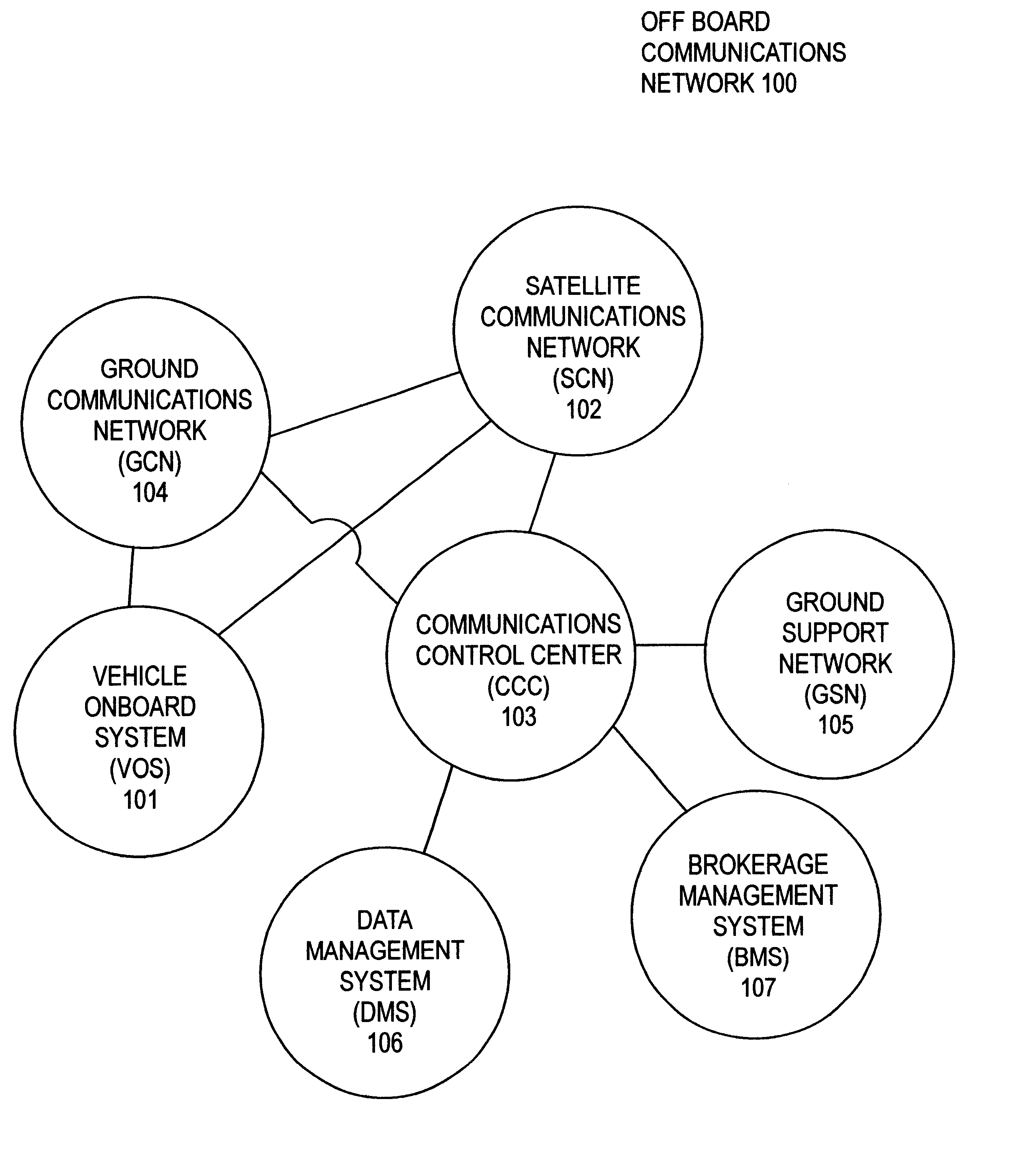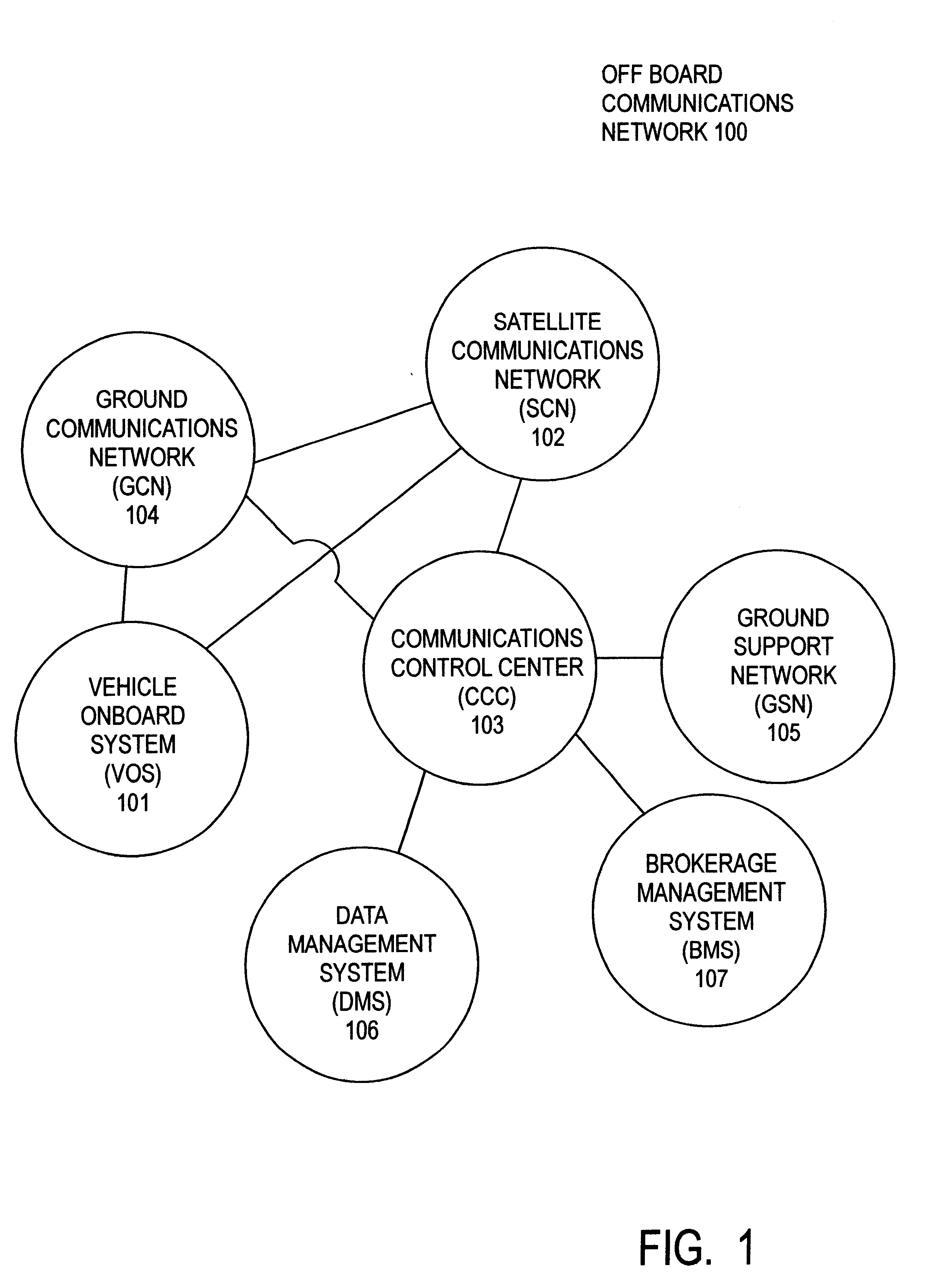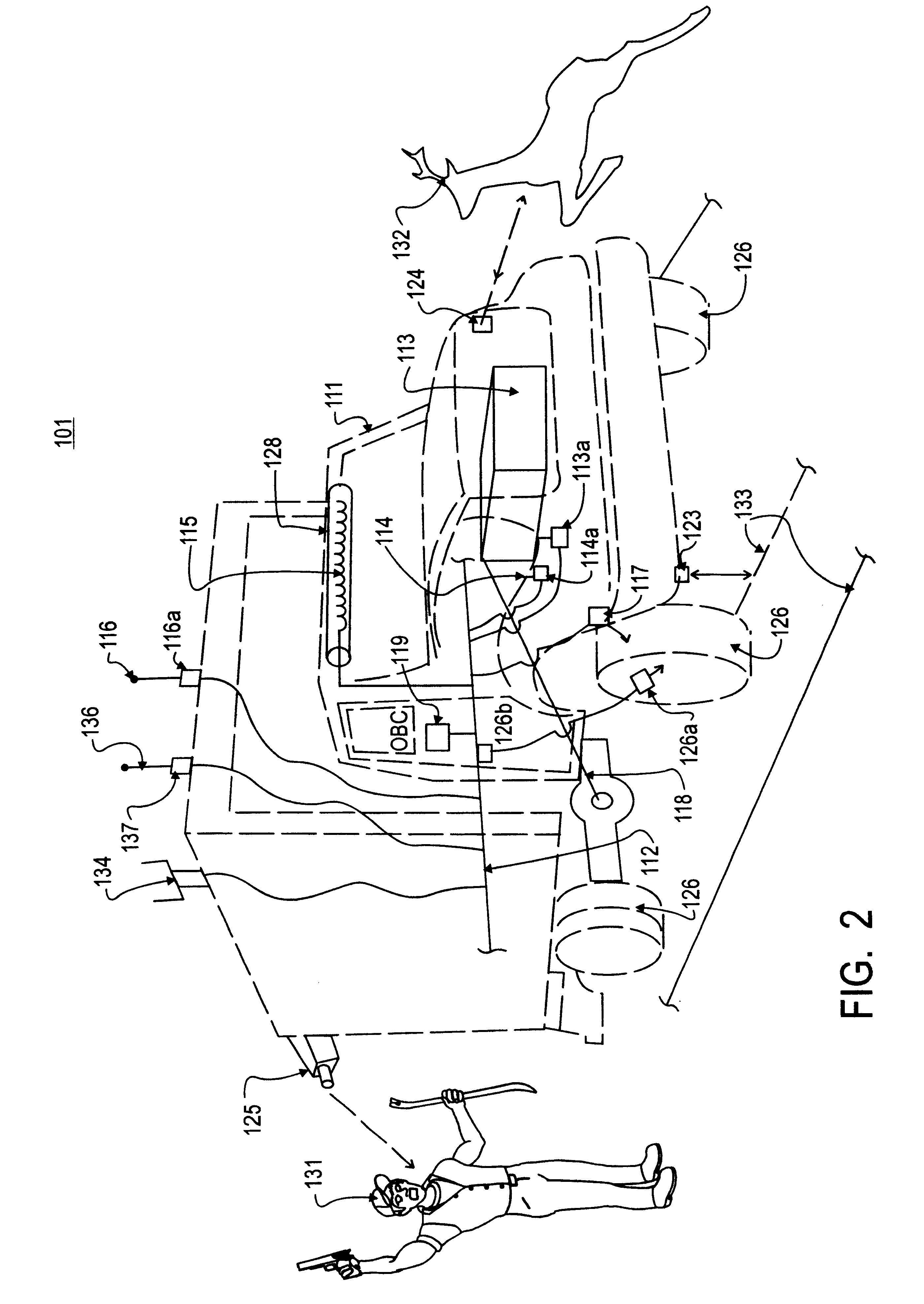Land vehicle communications system and process for providing information and coordinating vehicle activities
a communication system and vehicle technology, applied in the field of vehicle communication system, can solve the problem of no prior art coordinated vehicle load transfer of independent carriers, and achieve the effect of improving productivity, effectiveness, safety and other benefits
- Summary
- Abstract
- Description
- Claims
- Application Information
AI Technical Summary
Benefits of technology
Problems solved by technology
Method used
Image
Examples
Embodiment Construction
FIGS. 1 to 22 show a land vehicle communications system and process for providing information and coordinating vehicle activities. A land vehicle off board communication network 100 made in accordance with this invention may be comprised of any number of the subparts shown in FIG. 1. Both a centralized and de-centralized control scheme embodiment will be described. These subparts consist of: a Vehicle Onboard System (VOS) 101; a Satellite Communication Network (SCN) 102; a Communication Control Center (CCC) 103, short for the ECCC described earlier; a Ground Communication Network (GCN) 104; a Ground Support Network (GSN) 105; a Data Management System (DMS) 106; and a Brokerage Management System (BMS) 107. The minimum requirements for a vehicle communication network 100 are a VOS 101, a GSN 105, and either a SCN 102 or a GCN 104.
The VOS 101 serves two primary functions. The first is to provide information and requests to the CCC 103 through either the SCN 102 or the land based GCN 10...
PUM
 Login to View More
Login to View More Abstract
Description
Claims
Application Information
 Login to View More
Login to View More - R&D
- Intellectual Property
- Life Sciences
- Materials
- Tech Scout
- Unparalleled Data Quality
- Higher Quality Content
- 60% Fewer Hallucinations
Browse by: Latest US Patents, China's latest patents, Technical Efficacy Thesaurus, Application Domain, Technology Topic, Popular Technical Reports.
© 2025 PatSnap. All rights reserved.Legal|Privacy policy|Modern Slavery Act Transparency Statement|Sitemap|About US| Contact US: help@patsnap.com



